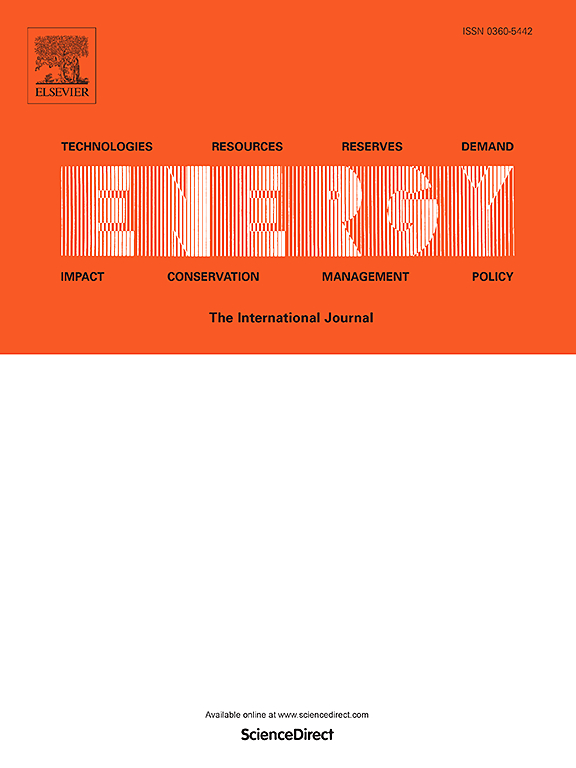Under complex wind scenarios: Considering large-scale wind turbines in wind farm layout optimization via self-adaptive optimal fractional-order guided differential evolution
IF 9
1区 工程技术
Q1 ENERGY & FUELS
引用次数: 0
Abstract
Wind energy has become a crucial solution for reducing environmental pollution through electricity generation. However, the wake effect between different wind turbines significantly impacts the efficiency of power generation in wind farms. Wind farm layout optimization (WFLO) seeks to mitigate the wake effect and improve overall energy conversion efficiency by optimizing turbine placement. As the number of turbines increases, maintaining high efficiency becomes more challenging, testing the performance of optimization algorithms. But existing algorithms often overlook valuable historical information, which can be crucial for improving optimization efficiency. Therefore, this paper proposes self-adaptive optimal fractional-order guided differential evolution algorithm (SaOFGDE) optimizing large-scale and complex WFLO. In SaOFGDE, classification crossover rate update approach based on historical information weighting is proposed to enhance the mutation efficiency of individuals. Secondly, the optimal fractional-order calculus method is designed to make high use of the information of historical individuals, which can provide more accurate derivative approximations to help individuals make optimal decisions. SaOFGDE is tested on four extremely complex WFLO in four large wind farms, comparing with eight well-established algorithms. The results show that SaOFGDE still improves the conversion efficiency by an average of 2.64 %, 5.10 %, 3.04 % and 3.86 % respectively under the largest wind turbine setting.

求助全文
约1分钟内获得全文
求助全文
来源期刊

Energy
工程技术-能源与燃料
CiteScore
15.30
自引率
14.40%
发文量
0
审稿时长
14.2 weeks
期刊介绍:
Energy is a multidisciplinary, international journal that publishes research and analysis in the field of energy engineering. Our aim is to become a leading peer-reviewed platform and a trusted source of information for energy-related topics.
The journal covers a range of areas including mechanical engineering, thermal sciences, and energy analysis. We are particularly interested in research on energy modelling, prediction, integrated energy systems, planning, and management.
Additionally, we welcome papers on energy conservation, efficiency, biomass and bioenergy, renewable energy, electricity supply and demand, energy storage, buildings, and economic and policy issues. These topics should align with our broader multidisciplinary focus.
 求助内容:
求助内容: 应助结果提醒方式:
应助结果提醒方式:


